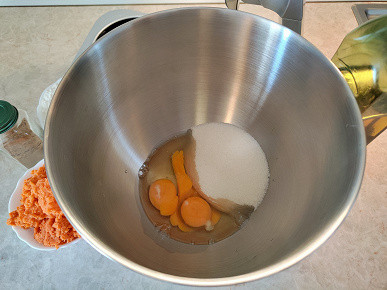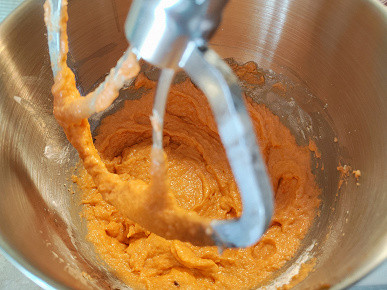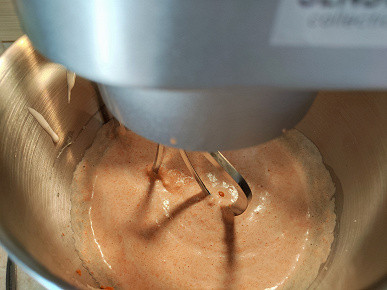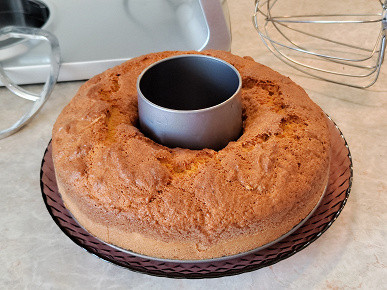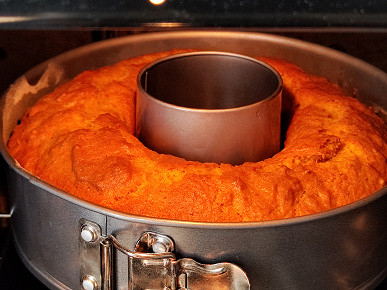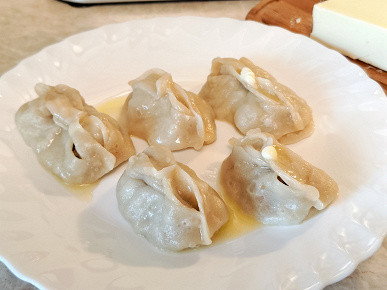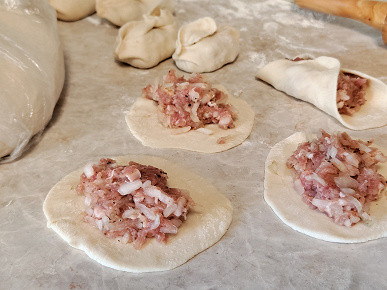Some time ago, food processors were very popular. These multifunctional appliances with a motor unit and numerous attachments were used in kitchens everywhere. Currently, manufacturers offer kitchen machines, which are usually a powerful planetary mixer with the ability to expand to a food processor with additional attachments. The advantage of this approach is that the buyer can independently select the necessary attachments and not overpay for those that he does not intend to use.

History IKM-XD323 is just such a model. The basic configuration includes a powerful (1800 W) planetary mixer with a seven-liter steel bowl. If necessary, you can purchase additional attachments, such as a meat grinder, vegetable slicer or a machine for preparing various types of pasta. The device is equipped with touch controls that allow you to smoothly adjust the time and speed of operation. The manufacturer also guarantees low noise levels and durability of the device due to the use of high-quality materials and careful assembly.
Characteristics
| Manufacturer | History |
|---|---|
| Model | IKM-XD323 |
| Type | kitchen machine |
| Country of Origin | China |
| Guarantee | 2 years |
| Life time * | 3 years |
| Power | 1800 W |
| Control | touch, touch LED display |
| Indication | LED, sound |
| Smooth speed control | yes, from 1 to 10 |
| Timer | yes, from 30 seconds to 10 minutes |
| Nozzle rotation speed | 39—211 rpm |
| Housing material | cast aluminum |
| Bowl material | steel |
| Bowl volume | 7 l |
| Nozzles included with the planetary mixer | whisk, dough hook, mixing paddle |
| Accessories | bowl, splash screen cover |
| Possible additional accessories | meat grinder , vegetable cutter , attachments for making pasta |
| Peculiarities | smooth start-up, overheating protection, overload protection, against switching on if assembled incorrectly |
| Weight | 7.6 kg |
| Dimensions (W×H×D) | 24×36×40 cm |
| Network cable length | 108 cm |
* Contrary to popular belief, this is not the time limit after which the device will necessarily break down. However, after this period, the manufacturer ceases to bear any responsibility for its performance and has the right to refuse to repair it, even for a fee.
Equipment
The device is supplied in two boxes: a shipping box made of thick, unpainted cardboard with a minimum amount of information, and a colorful one, designed to create a first impression on the user. Having studied the packaging, you can understand that there is a planetary mixer inside as standard, and also learn about its advantages and features.

Inside, the kitchen machine is secured with two foam inserts that sit tightly in the box. The steel bowl is protected from the inside by two layers of durable cardboard. All accessories and housing are additionally packed in plastic bags. Having opened the package, we found:
- engine compartment with fixed bowl
- three attachments: whisk, spatula and hook
- plastic protective cover
- manual
The device is packaged securely, eliminating the risk of damage or deformation.
At first sight
The History IKM-XD323 kitchen machine is designed as a standard planetary mixer with the ability to connect additional attachments. The device has an elegant and discreet appearance thanks to the use of metal: a matte silver body and a shiny steel bowl.
Control is carried out through a single round-shaped LED touch display, which is clearly highlighted in black on the front of the case. Below the display there is a lever for fixing the motor unit. When you press the lever up, the motor unit rises smoothly, without sudden movements.

On the right side of the device there are ventilation holes and a holder for the electrical cord. The cable length is 1.08 m, which is quite enough for using the device at home.
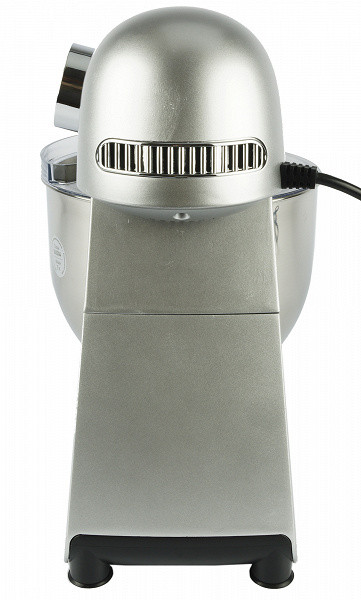
On the left side of the engine compartment there is a connecting socket for attaching additional attachments (meat grinders, vegetable cutters, pasta preparation devices). This socket is closed with a metal plug, which is secured with a side screw.
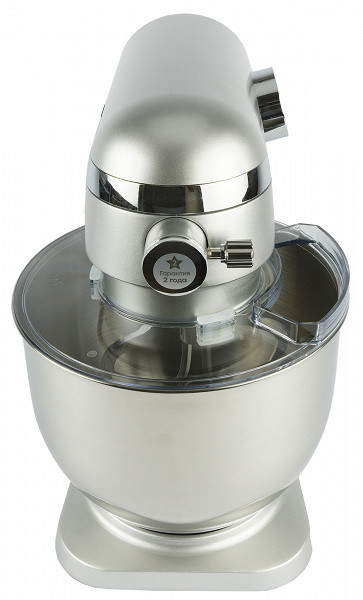
By lifting the engine compartment, you can see where the attachments for the planetary mixer are attached. The drive shaft is made of steel, and a cross pin is built in one and a half centimeters from its lower edge to transmit torque to the nozzle. The accessories are attached in the standard way: you need to align the grooves on the shaft with the protrusions on the nozzle, insert it all the way and turn it counterclockwise.
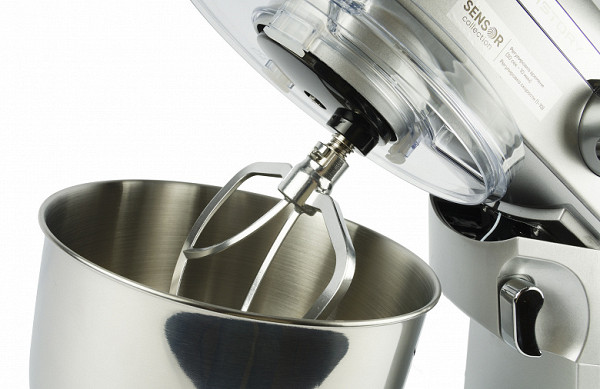
At the bottom of the device there are four legs with suction cups with a diameter of 3 cm. They do their job perfectly — the device is difficult to tear off from the table, which guarantees stability and prevents vibrations and slipping during operation. In the center of the bottom there is a plate with information about a specific product.
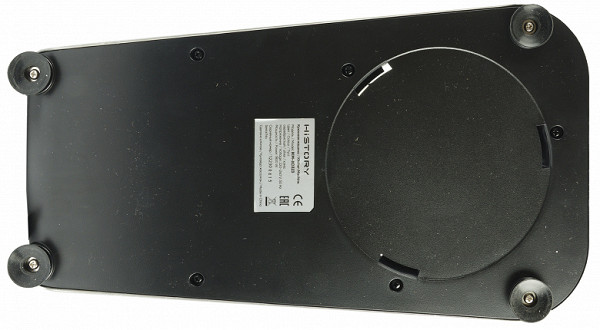
On the right side of the base there is a recess intended for installing a bowl. The depth of the socket is 2.5 cm. Three clamps ensure a reliable and durable installation. The bowl is locked at the base of the body in an intuitive way — by turning clockwise.
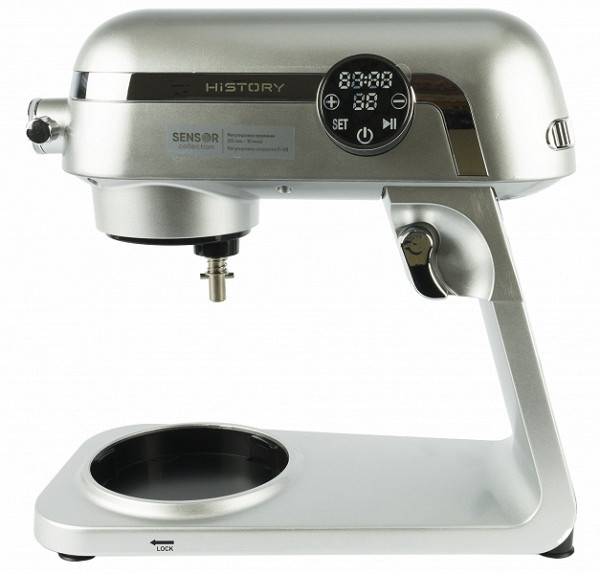
The steel bowl with a capacity of 7 liters has a standard shape. At the bottom of the bowl in the center there is a low, pointed protrusion that allows you to efficiently process small volumes of food.

The attachments have a familiar shape and design, but their massiveness attracts attention, especially the dough hook. The all-metal whisk consists of six blades located at different levels, which probably contributes to high-quality whipping and aeration of mixtures or products. The whisk spirals are made of steel, and the remaining attachments are made of aluminum alloy. The metal workmanship is good — the parts are pleasant to hold in your hands, the surface is smooth and without jagged edges.

The kit also includes a plastic protective cover. The transparent lid has a hole for adding food while working. The size of the hole at the widest point is 5x14 cm. The cover is attached with silicone seals to the inside of the motor unit and protects it and surrounding surfaces from splashes and drops.

Impressions from a visual acquaintance with the History IKM-XD323 kitchen machine turned out to be the most favorable. Its appearance is noble, its assembly and execution are impeccable, the metal surface is pleasant to the touch, and the parts are pleasant to hold in your hands.
Instructions
In the instruction manual you can familiarize yourself with the purpose of the History IKM-XD323 kitchen machine, safety measures, as well as all aspects of its operation. The text is accompanied by pictures, tables and diagrams, which makes it easier to understand. The same document contains the rules and features of the operation of additional attachments — meat grinder, vegetable cutter and attachment for making pasta.

The text is really easy to understand, the information is simple, the A5 booklet is printed on high-quality paper, so boring reading is not very tiring.

Control
Control of a planetary mixer is usually simple and intuitive. Our hero was no exception, but distinguished himself with a special implementation. When the device is turned on, the indicator at the bottom of the LED display located on the front side of the engine compartment lights up automatically.

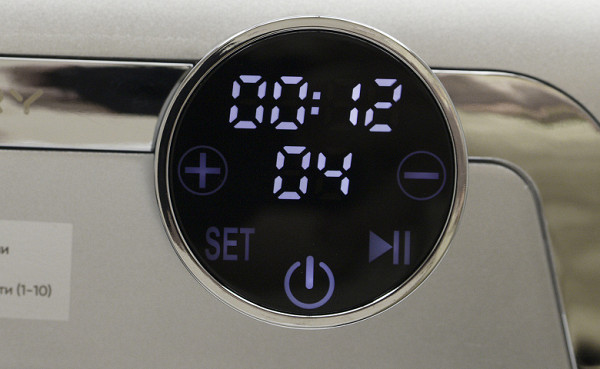
To set the operating time, press the “Set” button, after which the cooking time indicator will start flashing, and you can set the required time using the “+” and “−” buttons. The time adjustment step is 10 seconds. To start working, press the start and pause button. At the end of the countdown, a beep will sound and shaft rotation will stop. If the time period is not specified, the timer will display a direct countdown of the operating time. When you pause and lift the folding part of the motor unit, the display goes out and the time countdown is reset to zero.
All buttons and indicators work properly, respond to light touches without delay, and are clearly visible both in dark and brightly lit rooms. Operating the History IKM-XD323 kitchen machine seems extremely convenient and simple. It’s especially nice that there are no problems turning the knobs even with dirty, greasy hands.
Exploitation
Before using the History IKM-XD323 kitchen machine, you should wipe the engine compartment with a damp cloth and wash accessories that come into contact with food.
Preparation for work occurs quickly and without unnecessary hassle. To raise the upper part of the engine compartment, simply press the locking lever. By installing the bowl into the socket on the base, you can secure the desired attachment to the shaft. After this, simply lower the hinged part of the engine compartment. Disassembly occurs in the same way, only in reverse order.
Attachments are designed for different tasks: the hook is used for kneading dough, the whisk is used for beating light mixtures, and the spatula is used for mixing ingredients. The machine copes well with any of them, providing high quality results.
The minimum volume for whipping is 2-3 egg whites, but it is recommended to use a volume of 150 ml or more. The maximum volumes for various attachments are also limited and are 840 g of water and 660 g of flour for a spatula, and for a hook — 1000 g of flour and 538 g of water. The maximum continuous runtime is 10 minutes, but we didn't notice any problems when using it for that long.
The machine remains stable even with strong vibrations, and there is virtually no splashing. Operating the device is intuitive and convenient, and the quality of materials and assembly evokes only positive impressions.
As a result, we were very pleased with the use of the History IKM-XD323 kitchen machine. It easily copes with any tasks and provides high quality results.
Care
The engine compartment should not be exposed to water; its surface should be wiped with a damp and dry soft cloth. Acid-free cleaning products can be used. The manual emphasizes the importance of avoiding moisture on the kitchen appliance body. The motor shaft should be wiped down after each use to prevent food residue from accumulating. The bowl is dishwasher safe, but all other accessories should only be cleaned by hand using a mild, non-abrasive detergent.
Caring for the device and its accessories did not cause us any difficulties. The main thing is to clean the body and attachments immediately after use to avoid product residues from drying out.
Our measurements
The power of the History IKM-XD323 kitchen machine varies depending on the operating speed and density of the ingredients being mixed. When kneading unleavened dough for dumplings, the power reaches 210 W, while in other tests it does not exceed 150 W:
- When kneading minced meat at second speed, the machine consumes 104 W.
- Beating three eggs at speed 10 requires 146 W.
- Whipping cream at speeds six and eight consumes 99 W and 109 W, respectively.
The energy consumption of a planetary mixer can be represented as follows:
- Kneading 1.6 kg of dense unleavened dough requires 7 minutes 30 seconds and 0.012 kWh.
- Preparing carrot cake (beating eggs and kneading soft dough) takes 0.010 kWh.
The noise level is rated as medium-low. The machine makes a sound, but it is not annoying, allowing you to work comfortably even at maximum speeds.
Practice tests
During our tests, we will evaluate the ease of operation, the adequacy of the speed modes of operation of the kitchen machine, as well as the shape and size of accessories for preparing various dishes and dough of different densities. We will also focus on determining the maximum and minimum volume of ingredients that can be successfully processed using the History IKM-XD323.
Whipped cream
To begin with, we checked how successfully the device copes with a minimum volume of product. We poured 150 ml of cream with a fat content of 35% into the bowl. However, after careful consideration we decided to add another 50 ml. Even with a total volume of 200 ml, the product seemed too small compared to the capacity of the seven-liter bowl.
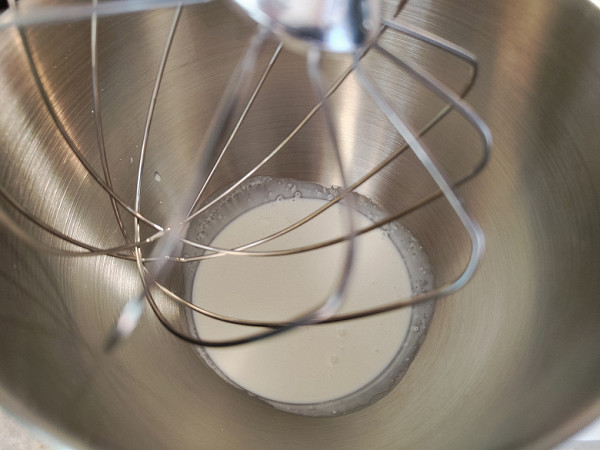
We prepared the car by placing the bowl on the base and lowering the engine bay. The tip of the whisk, or rather its three outer petals, were immersed in the cream, which meant the beginning of the whipping process. We started at a low speed, gradually increasing it to sixth, and then to eighth. Most of the time we whipped the cream at this speed and stopped the process just as gradually.
After about three minutes of whipping, the cream began to thicken. We carefully added a little powdered sugar to them, about a couple of teaspoons. After five minutes, a noticeable whisk pattern began to remain on the surface of the cream.

At 5 minutes 40 seconds they began to reduce the speed, and at 6 minutes 10 seconds they stopped beating. The cream turned out to be stable, perfectly whipped and filled with air.

We put them in a pastry bag, placed them in a bowl and decorated with fresh strawberries.

The mixer with a huge seven-liter bowl and an impressive whisk was able to successfully whip 200 ml of cream in 6 minutes of operation. We rate this result as excellent.
Result: excellent.
Mashed potatoes
To make mashed potatoes, we decided to use the paddle attachment and check to see if the attachment was spinning too fast when operating on first speed. The weight of the boiled potatoes was 1.14 kg.
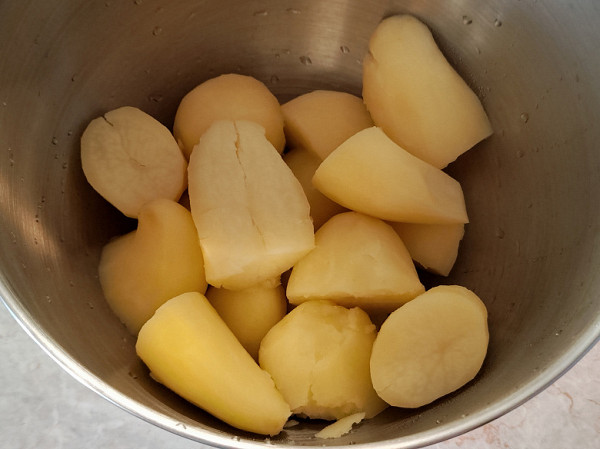
We prepared the puree at first speed. After about a minute, when the potatoes had turned into a homogeneous mass, they added one and a half glasses of hot milk, a piece of butter and a pinch of salt. We stopped the motor once to use a silicone spatula to clear the potatoes that had stuck to the walls and move them closer to the center of the bowl.

The device worked for two minutes! In just 2 minutes 10 seconds, the mixer prepared us almost one and a half kilograms of wonderful airy mashed potatoes without lumps and pieces of potatoes.

The speed is ideal for making mashed potatoes, the spatula did its job perfectly.
Result: excellent.
Carrot cake
So, to prepare a cake with carrots and spices, we collected all the necessary ingredients: 250 g of carrots, 250 g of flour, 200 g of sugar, 3 chicken eggs, 170 ml of vegetable oil, 1½ teaspoons of baking powder and 1½ teaspoons of a mixture of spices for pumpkin or apple cake (including cinnamon, cardamom, allspice and cloves).
To begin with, we turned on the oven, since the process of preparing the dough is usually quite fast. The first step was to beat the eggs and sugar.
We started beating the eggs and sugar at speed 8 and then increased it to maximum. In two minutes the mixture turned into a white, fluffy and air-filled mass. You can see in the next photo that there was very little product spattering.

We added the carrots, spice mixture, and oil, replaced the whisk with a paddle, and continued mixing on low speed. In less than a minute of running on speed two, all the ingredients were evenly mixed. Then we poured in all the flour at once, to which we had previously added the baking powder, and continued mixing with a spatula attachment for another three minutes. As a result, the dough turned out to be medium thick and fluffy.
Grease the mold with butter and lightly sprinkle with flour, then lay out the dough.

Bake for 50 minutes at 180 °C.
After cooling the cake, we sprinkled it with powdered sugar and went to delight others with our creation.
The device demonstrated high performance both when beating eggs and when carefully mixing the whipped mass with other ingredients. There was no splashing of the products, the mixing was uniform, and the whisk beat perfectly and enriched the mass with air.
Result: excellent.
Manti (thick dough and kneading minced meat)
We begin to test how our mixer will cope with the most difficult tasks and show its capabilities to the limit. To do this, take a kilogram of flour, make a depression in the center and add 540 ml of water mixed with two eggs and salt.
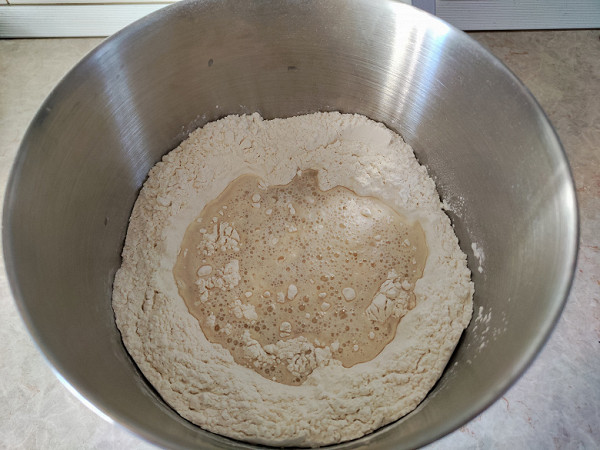
We started working at second speed. Although the hook rotated in the center, it did not mix the flour around the edges of the bowl as successfully. After some time of kneading, we stopped the work to use a spoon to collect the flour from the edges and transfer it to the center. This gave the dough greater mobility. At a certain point, we realized that the dough was not wet enough, so we added about 50 ml more water and continued kneading. After six minutes the dough was ready, but we decided to keep running the mixer to bring it to perfection.
After seven and a half minutes, the dough was definitely ready — a dense, tight lump that did not stick to your hands.
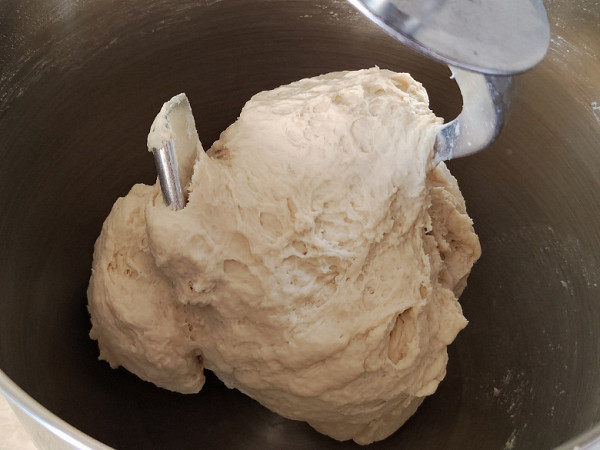
Since we were already kneading the dough at maximum speed, we decided to check whether the motor would overheat if we continued to work after exceeding the recommended time. This was rather a fun experiment for us, since for the test it was all the same, but for the device it was a test of its reliability. We continued kneading at second speed for 10 minutes. The machine operated reliably without any noticeable problems or difficulties. However, at the 11th minute we stopped the experiment, since nothing interesting happened with the device.
Then we sent the dough to rest and began preparing the minced meat. 720 grams of pork and beef, 430 grams of finely chopped onion, as well as salt and spices were added to the bowl.
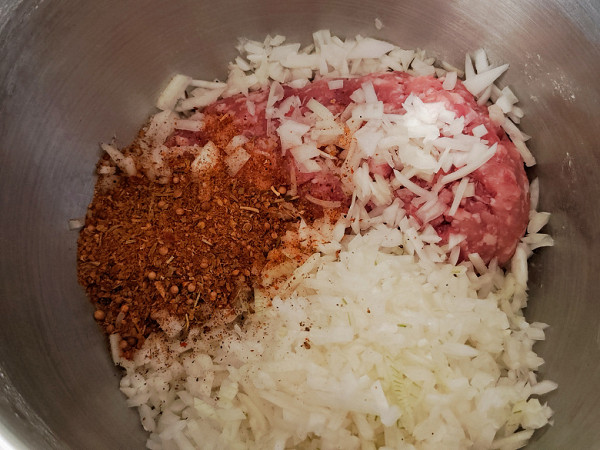
We attached a spade attachment to the shaft and began observations.
Without straining or getting your hands dirty, in three minutes we got a perfectly mixed meat filling for the manti.
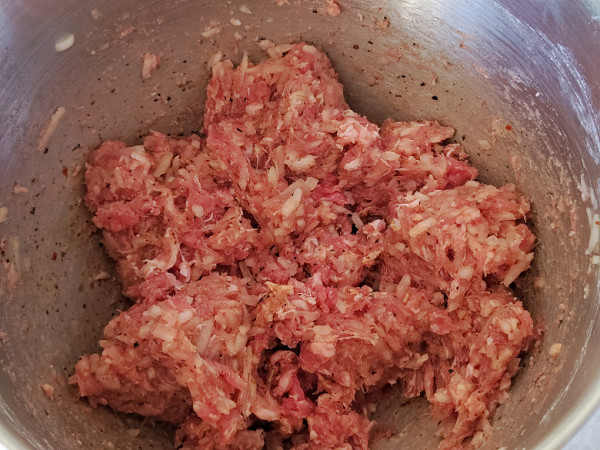
Further actions have nothing to do with the History IKM-XD323 kitchen machine, but we will add a couple of photos.
As a result, we can say that the device did an excellent job of kneading more than one and a half kilograms of tight unleavened dough and with tedious kneading of minced meat.
Result: excellent.
sonuçlar
During testing, the History IKM-XD323 kitchen machine confirmed its simplicity and high ease of operation, use and maintenance. All the characteristics and capabilities of the device declared by the manufacturer have been justified in practice: it works quietly, does not cause food to splash on the walls of the bowl, is capable of kneading dense dough from a kilogram of flour and successfully whips 200 ml of cream.

The machine is distinguished by a smooth start of rotation of the nozzles, the ability to regulate the speed and set the operating time. The built-in protection against overheating and overload did not show itself during testing — the case remained cool even during prolonged operation. The machine stands steadily on the table, regardless of the volume and nature of the ingredients being processed. Our experience with the History IKM-XD323 left us completely satisfied, and we regretted that we did not have the opportunity to try out the additional attachments included in the basic package.
Pros:
- processes both large and small volumes of products
- extremely convenient operation
- quiet operation
- smooth start
- possibility to purchase additional attachments
Minuses:
- not detected


